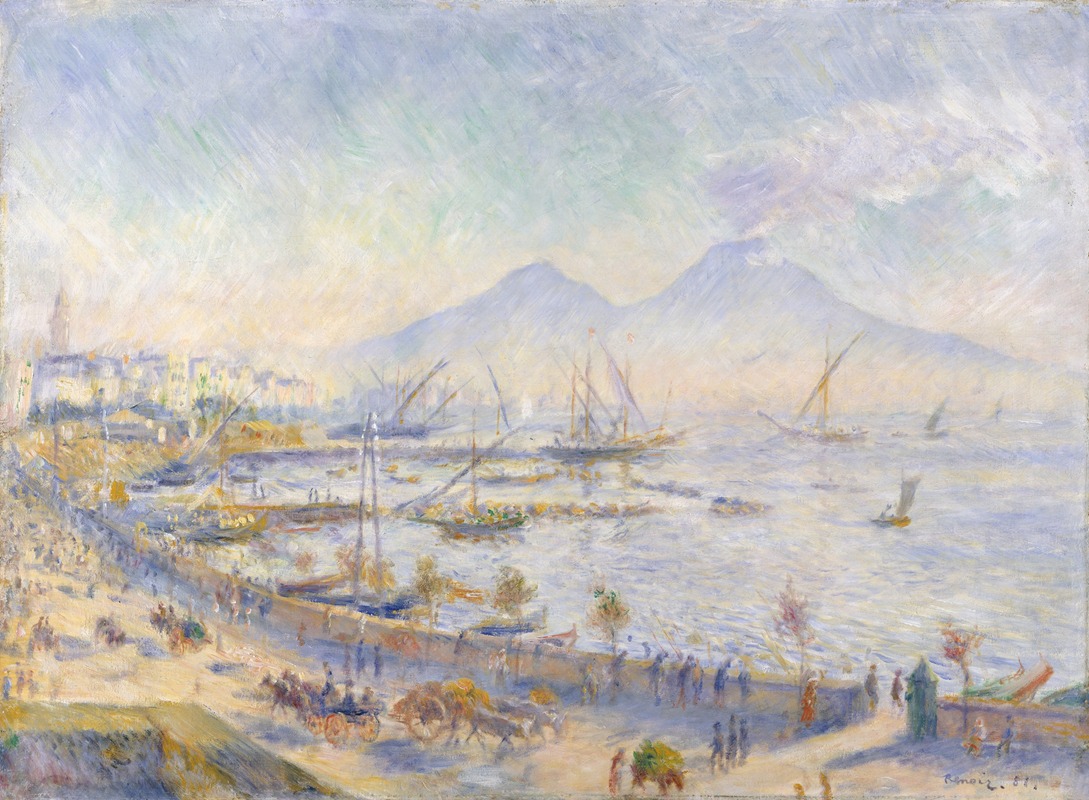
The Bay of Naples
A hand-painted replica of Pierre-Auguste Renoir’s masterpiece The Bay of Naples, meticulously crafted by professional artists to capture the true essence of the original. Each piece is created with museum-quality canvas and rare mineral pigments, carefully painted by experienced artists with delicate brushstrokes and rich, layered colors to perfectly recreate the texture of the original artwork. Unlike machine-printed reproductions, this hand-painted version brings the painting to life, infused with the artist’s emotions and skill in every stroke. Whether for personal collection or home decoration, it instantly elevates the artistic atmosphere of any space.
Pierre-Auguste Renoir's The Bay of Naples is a painting created by the renowned French Impressionist artist during his travels to Italy in the early 1880s. Renoir, known for his vibrant use of color and light, painted this work as part of his exploration of Mediterranean landscapes, which greatly influenced his artistic style during this period.
The painting depicts the scenic Bay of Naples, a famous coastal area in southern Italy known for its natural beauty and historical significance. Renoir's rendition captures the luminous atmosphere of the region, with its shimmering waters and the soft interplay of light and shadow. The work reflects his fascination with the Mediterranean light, which he found to be brighter and more intense than the light in northern Europe. This experience led him to experiment with a more refined and structured approach to composition, moving slightly away from the loose brushwork characteristic of his earlier Impressionist works.
Renoir's journey to Italy was partly inspired by his desire to study the works of classical and Renaissance masters, as well as to seek new inspiration for his art. During this trip, he visited several cities, including Rome, Venice, and Naples. The Bay of Naples, with its picturesque views and vibrant colors, provided an ideal subject for Renoir's artistic exploration.
The exact date of the painting is not definitively documented, but it is generally attributed to the early 1880s, around the time of Renoir's Italian travels. The work is considered an example of Renoir's transitional phase, where he began to incorporate elements of classical composition and a more disciplined approach to form, while still retaining the Impressionist emphasis on capturing the effects of light and atmosphere.
As of now, the current location of The Bay of Naples is not widely documented, and it is unclear whether the painting is held in a public collection or a private one. Despite this, the work remains an important example of Renoir's engagement with Mediterranean landscapes and his evolving artistic style during this period.
This painting is often appreciated for its serene depiction of a timeless landscape and its ability to convey the warmth and vibrancy of the Italian coast. It stands as a testament to Renoir's ability to adapt and grow as an artist while maintaining his unique vision and sensitivity to the beauty of the natural world.


















